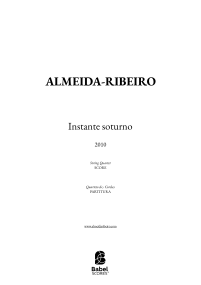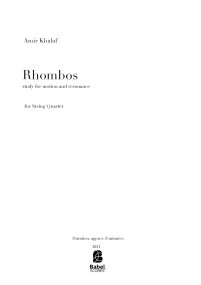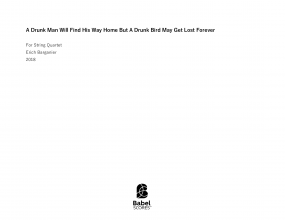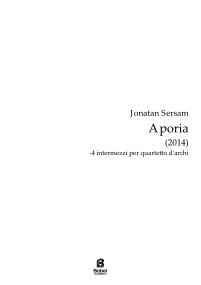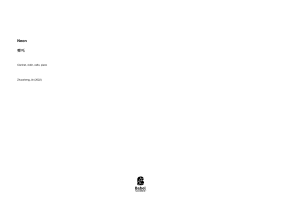Recherche avancée
Quatuor à cordes no.3
ISMN : 979-0-2325-7628-2
- Identifiez-vous pour créer une liste
Durand Quatuor à cordes no.3 (2023-24)
My third string quartet, like all the music I have written in the last few years offers an invitation to bring our listening attention to a very focused kind of concentration inside the movement of the sound. In this new string quartet, the music takes us from an extroverted, animated type of discourse (the descending lines of the first section) to a progressively more introspective reflection, where time slows down and intervals between notes become ever smaller, guiding us to listen to a different dimension of sound. Eventually, as we approach the end of the piece, we are presented with the rich sound life that exists inside one single note played together by all the instruments—the unison.
To realize this general trajectory, I chose the interval of minor third as a unifying element, as well as a structural boundary. I became interested in the microtonal sound world that exists between the intervals of minor third and unison as I spent hours listening to slow glissandi of two sine tones played at the same time, one unchanging and the other one gliding from the interval of the fifth to the unison and back. While this may sound like an awful (and unartistic!) way to spend time working on a piece of music, the more I listened, the more I realized that each minute movement between the two tones generates a constantly varied—and elusive—sound world. The passage around the minor third is often considered in psychoacoustics as the “critical band”: it is the area where beats start to be heard, at first chaotically, then more clearly as the two tones approach the unison. This is one reason why I gave this interval a central role throughout the piece. When performing such beat patterns (and glissandi) with acoustic instruments, the results are of course immensely richer than with sine tones, due to the inherent complexity of their frequency spectrum. And not only is the spectrum more complex at any given moment, but it also changes constantly because of the variations of bow pressure on the string, the position of the bow, the tiny movements of the finger pressing the string, and so on. This leads to an inherent instability in the production of beats—a fertile source of musical tension.
In the first large section of the piece, the minor third is presented on one hand in a melodic and harmonic fashion (the descending lines), and on the other as the upper limit of slow glissandi that explore the beats obtained between the unison and the minor third (D4-F4). In this latter situation, the minor third has a different structural and acoustic role: it is perceived as the outer limit of the critical band and its associated beatings. As the descending lines come back, their profile is each time altered a little more by their growing intervallic contents, and the progressive invasion of glissandi. The exploration of beats close to the unison forms the focus of the second section of the piece, eventually leading to a return of the descending lines of the first section, now at much slower speed, each time recurring with smaller intervals. Microtonal melodies finally bring about the “pure” unison, reached twice: the first time by the viola alone, the second time by all four instruments.
Viola
Cello
Pages - 40





